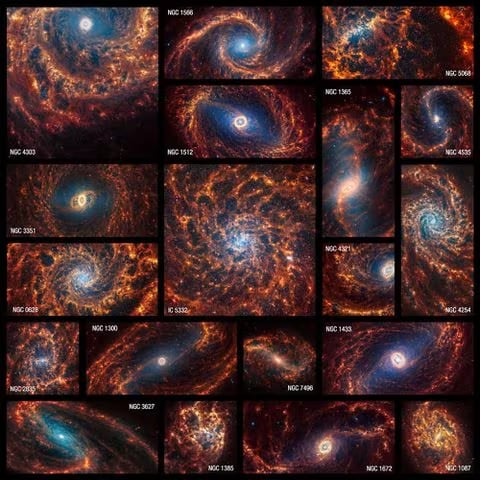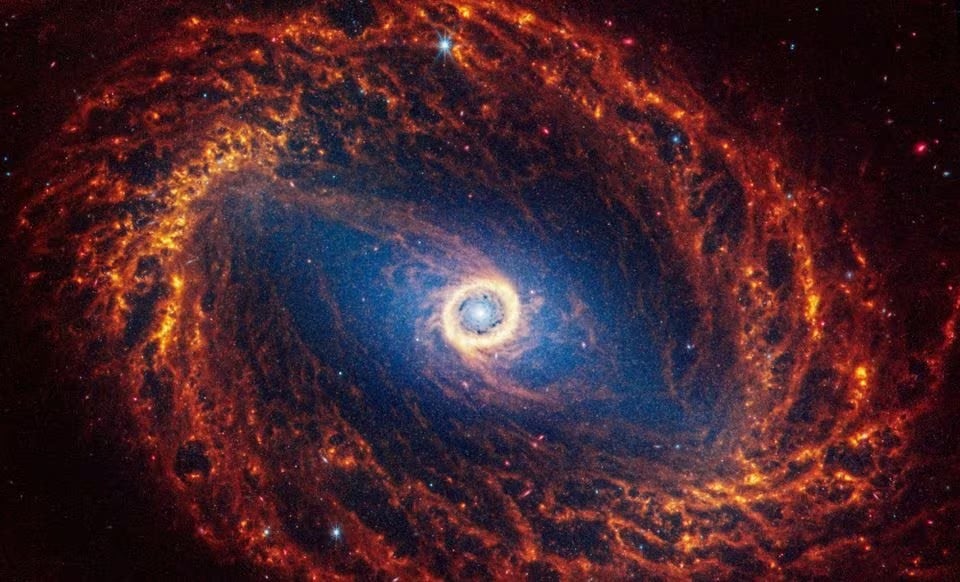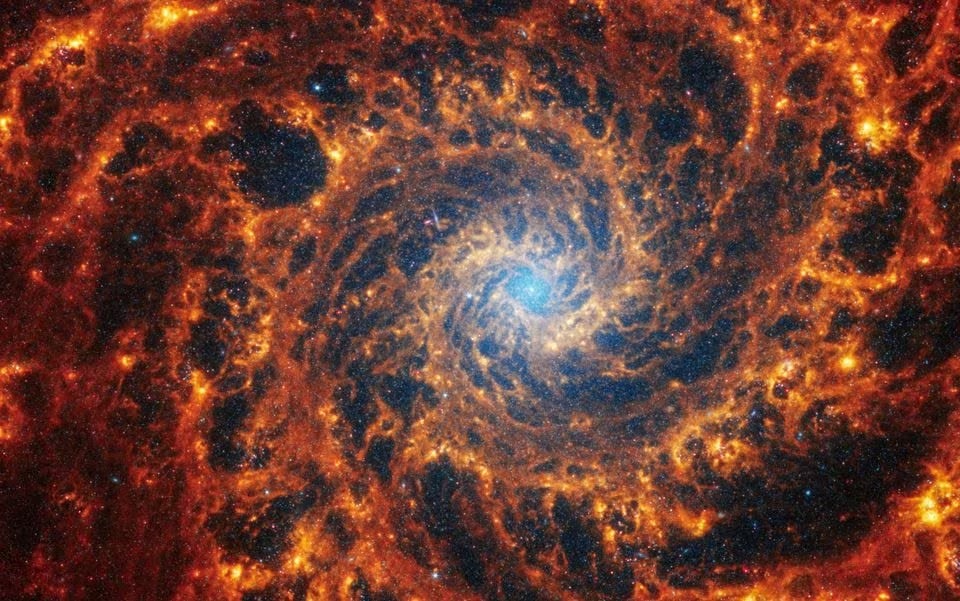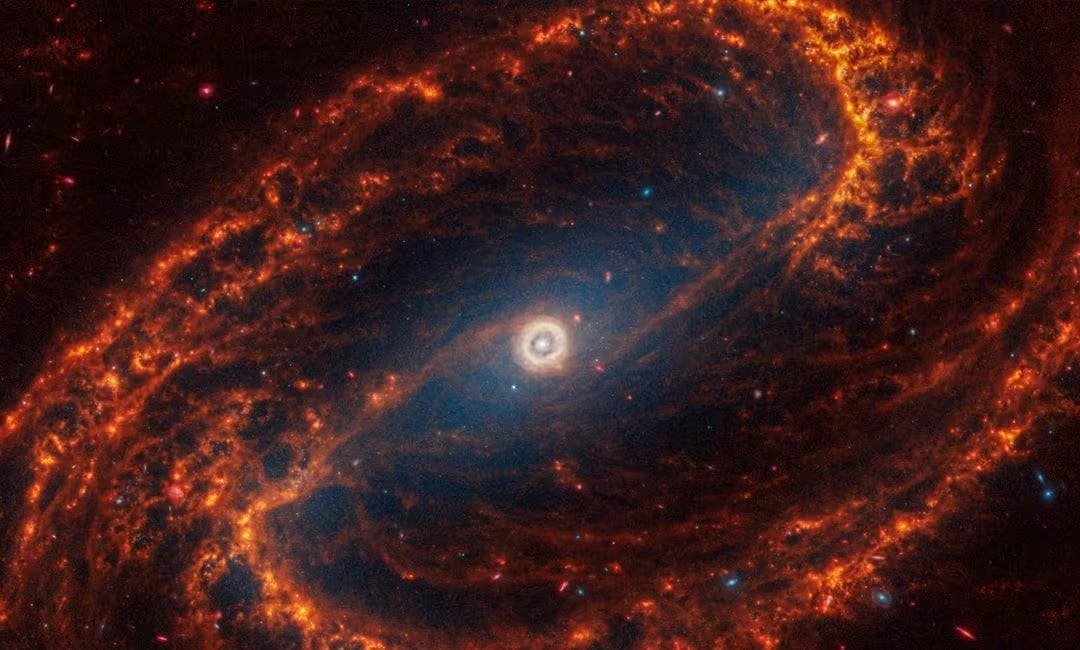The images were released on Monday (January 29) by a team of scientists involved in a project called Physics at High Angular Resolution in Nearby Galaxies (PHANGS), who are working from several major astronomical observatories.
The nearest of the 19 galaxies is called NGC5068, which is about 15 million light-years from Earth, and the farthest of them is NGC1365, which is about 60 million light-years from Earth. Spiral galaxies, which resemble giant pinwheels, are a common type of galaxy, including our own Milky Way.
The James Webb Space Telescope, launched in 2021 and set to begin collecting data in 2022, has reshaped understanding of the early universe while capturing amazing images of the cosmos.
The new observations come from the James Webb Space Telescope's Near Infrared Camera (NIRCam) and Mid-Infrared Imager (MIRI) instruments. They reveal about 100,000 clusters, consisting of millions or even billions of individual stars.

A collection of 19 spiral galaxies recently discovered by the James Webb Space Telescope. Photo: NASA
“These data are important because they give us new insight into the earliest stages of star formation,” said astronomer Thomas Williams of the University of Oxford, who led the team that processed the data on the images.
"Stars are born deep inside dust clouds that completely block out light at visible wavelengths…, but these clouds still shine brightly at JWST wavelengths. We don't know much about this stage, not even how long it actually lasts, and so these data will be crucial to understanding how stars in galaxies begin their lives," Williams added.
These images allow scientists to resolve for the first time the structure of the clouds of dust and gas from which stars (like the Sun) and planets (like Earth) form.
“These images are not only aesthetically stunning, but they also tell a story about the cycle of star formation and feedback, which is the energy and momentum released by young stars into interstellar space,” said astronomer Janice Lee of the Space Telescope Science Institute in Baltimore.
Bui Huy (NASS, Reuters)
Source

































![[Photo] An Phu intersection project connecting Ho Chi Minh City-Long Thanh-Dau Giay expressway behind schedule](https://vstatic.vietnam.vn/vietnam/resource/IMAGE/2025/8/21/1ad80e9dd8944150bb72e6c49ecc7e08)

































![[Photo] Politburo works with the Standing Committee of Hanoi Party Committee and Ho Chi Minh City Party Committee](https://vstatic.vietnam.vn/vietnam/resource/IMAGE/2025/8/21/4f3460337a6045e7847d50d38704355d)

































Comment (0)